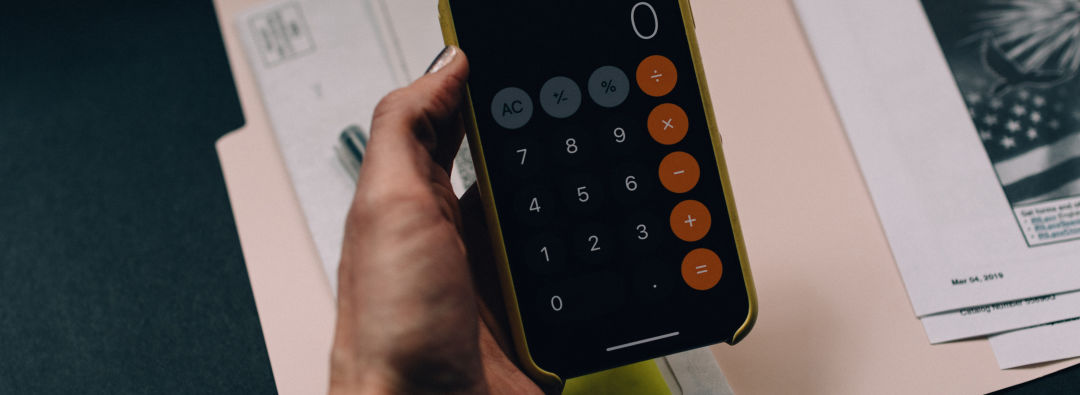By using our site, you agree to our cookie policy.
What is offer substantiation?
Offer substantiation sounds very jargony and a little scary — but it’s not very complicated. This stage of the process is surprisingly simple: it’s just about verifying that you are who you say you are and that you have the funds to buy the property.

When you're buying a home and you've made an offer, you may hear about 'offer substantiation' — which is a lot less scary than it sounds. In fact, in most cases it's really straightforward. It's just making sure that offer is legitimate and that you have the funds needed to move forward with the sale. It's easy to do — and we'll help you every step of the way. When you're selling and you've accepted an offer, the buyer will have to go through offer substantiation. Don't worry, we can get it sorted in a flash. But first, back to basics — what is offer substantiation and why do we have to do it?
What is offer substantiation?
It’s really important — it’s a legal requirement that all estate agents go through when an offer is accepted. HMRC says we have to. And we don’t mess with HMRC. Luckily, it’s really easy to do.
Essentially, it’s just checking to make sure there’s no identity theft or money laundering taking place. Not identity thieving? Not money laundering? Then this should be smooth sailing.
You’ll just need some documents to help move things along.
Using Credas
If you want to speed the process along, you can use Credas — an app which lets you upload your ID and proof of address and then does the verification for you. It will also do a “liveness” check, which is just a way of confirming that you’re a real person. The app is only valid if you provide ID, proof of address, and pass the “liveness” test, so it’s important to do all three.
Have questions? Just reach out. We’re always here to talk you through it. Let’s go through the type of identification you’ll need and we can send you a link to use Credas.

When you’re buying a property, there are a few documents that must be provided — we’ll need them from anyone going on the property deed.
Certified ID Certified proof of address Proof of deposit Proof of mortgageBuyer’s documents
“Certified” documents mean that the original document has been seen by a professional — and they’ve confirmed that everything on it is true and correct. The Credas app can do that for you or you can have someone you know do it. There are a few different occupations who can do this for you: Mortgage broker Solicitor Teacher Managing Director Nurse/Doctor The Post Office is also able to certify your documents for you.

Acceptable forms of ID
There are acceptable forms of ID — either by showing one valid photo ID or two valid IDs that don’t have a photo. In either case, the whole document will have to be visible, with nothing crossed out. Here are the types of documents you can use.
Photo ID
Full UK Passport Full Overseas Passport UK Photocard Driving License EU Photocard Driving License EEA Member State ID card Biometric Residence Permit UK Firearms/Shotgun License UK Military ID card
Whichever option you choose to use, it must be valid, in-date, issued by the correct authority, and signed if necessary. Most people will be able to use one of these documents, so the process should be straightforward.
Non-Photographic ID
If you use a non-photographic ID, there are more specific requirements.
Bank or Building Society Statement
Dated within the last three months Original statement No downloads Full document
Benefits or Pension Notification Letter
Blue Disabled Drivers Pass
Council Tax Bill
NHS Medical Card/Certificate
National Insurance Card
Utility bill, statement or letter from a supplier
UK birth certificate
Proof of address
Every buyer needs to provide a certified proof of address, but there’s a range of ways you can do this. You only need to provide one, but they each have their own requirements.

Bank or Credit Card Statement
Dated within the last three months Original statement No downloads Full document
Council Tax Bill
Current Mortgage Statement
Current TV Licence
UK Driving Licence
Homeowners Insurance Policy
Utility Bill (Gas, Electric, Water, Broadband)
Tenancy Agreement
Letter from NHS
Letter from Bank
Letter from Employer
Housing Benefits Documentation
There are a few forms of proof of address that you can’t use:
HM Revenue & Customs documents Letters from accountants or solicitors Mobile phone bills NHS Medical Card
You can’t use the same document for proof of address and non-photographic ID. You’ll have to use separate documents for each.
It’s a lot of information to take on board, but you’ll only have to worry about a handful of documents — however you choose to verify your identity and the way you plan to pay for your home."
Proof of Funds
After you prove that you are who you say you are, you also have to prove that you have the funds to buy the property — and that they come from legitimate sources. Again, this sounds a little intimidating, but it’s really just a bit of paperwork.
There are a few different ways you can prove you have the funds, depending on how you’re paying for the property. We’ll go through each one in a moment, but the different options are fairly straightforward.
New mortgage Mortgage transfer Cash from a sale Cash Gifted funds
New mortgage or mortgage transfer
If you’re getting a new mortgage, you should have an ‘Agreement in Principle’ (AIP) — it might also be called ‘Mortgage in Principle’ (MIP) or ‘Decision in Principle’ (DIP).
You’ll just need a certificate or statement from the lender that says the amount that they would lend 'in principle' based on your current position, dated within the last 3 months. You can also get confirmation from your mortgage broker.
You’ll also need to confirm the loan to value ratio — a fancy way of saying how much of the house you’re borrowing. You just need to show that between the deposit and the mortgage, you can cover the full purchase price of the house.
If you already have a mortgage, you can also show proof of a ‘Mortgage Transfer’ — that you’re moving your mortgage from your last property to this one. Just get confirmation from your lender that they’re happy to do this.
Not sure where to start? We offer simple, straightforward mortgage advice — for free.
You’ll also have to provide bank statements for the last month and proof that you have enough funds to cover the deposit. When showing proof of mortgage, the document must show:
Date Lender Name(s) of the buyer(s) Agreed loan amount
Cash from Sale
In a lot of cases, you might be relying on the sale of your current home or another property to put towards your purchase. You’ll just need to provide proof outlining the agreed sale price (a memorandum of sale), as well as a copy of the mortgage redemption statement showing how much equity remains in the property. You can ask your solicitor to confirm the sale price and the amount outstanding on the mortgage.
This memorandum of sale must show:
The name of the Agent / Solicitor The property address The name(s) of the vendor(s) The agreed offer amount
A mortgage redemption statement must show:
The lender The date The name(s) of the mortgagor(s) The outstanding mortgage value

Cash
If you have the funds in cold, hard cash, then congrats — you’ll just have to show you can cover the total cost of the property (and confirm where it came from).
Cash can mean a lot of different things.
Inheritance Bank statements Divorce settlement Insurance claim Shares/Bonds
Bank statements can be in the form of a screenshot or photograph, but must show:
The bank or building society The name on the account The current balance/funds available The date to prove its recent
Proof of shares or bonds should be provided in the form of certificate or statement and show:
The holder’s name The value

Gifted funds
If you’re getting a little help from family or friends, they’ll just have to provide a few documents.
A gift letter - This should include both of your names, the date, and the amount being gifted. It can be emailed, but it has to come straight from the gifter’s account. Photographic ID - This does not need to be certified Evidence and source of the funds available - Proof they have the funds, in the form of bank statements, investments, bonds, or inheritance.
It’s a lot of information to take on board, but you’ll only have to worry about a handful of documents — however you choose to verify your identity and the way you plan to pay for your home. Have any questions? Don’t hesitate to get in touch.
Strike feel free
Copyright © Strike Limited 2024

